Summary
Revista Brasileira de Ginecologia e Obstetrícia. 2017;39(1):35-39
Robotic surgeries for cervical cancer have several advantages compared with lapa-rotomic or laparoscopic surgeries. Robotic single-site surgery has many advantages compared with the multiport approach, but its safety and feasibility are not established in radical oncologic surgeries. We report a case of a Federation of Gynecology and Obstetrics (FIGO) stage IB1 cervical carcinoma whose radical hysterectomy, sentinel lymph node mapping, and lymph node dissection were entirely performed by robotic single-site approach. The patient recovered very well, and was discharged from the hospital within 24 hours.

Summary
Revista Brasileira de Ginecologia e Obstetrícia. 2017;39(1):31-34
The development of a tubocutaneous fistula due to endometriosis in a post-cesarean section surgical scar is a rare complication that generates significant morbidity in the affected women. Surgery is the treatment of choice in these cases. Hormonal therapies may lead to an improvement in symptoms, but do not eradicate such lesions. In this report, we present a 34-year-old patient with a cutaneous fistula in the left iliac fossa with cyclic secretion. Anamnesis, a physical examination, and supplementary tests led us to suggest endometriosis as the main diagnosis, which was confirmed after surgical intervention.

Summary
Revista Brasileira de Ginecologia e Obstetrícia. 2016;38(12):623-628
We describe a Herlyn-Werner-Wunderlich syndrome (HWWS) patient with previous history of infertility who got pregnant without treatment and presented a pyometra in the contralateral uterus throughout the gestational period, despite multiple antibiotic treatments. Due to the uterus' congenital anomaly and the possibility of ascending infection with subsequent abortion, this pregnancy was classified as high-risk. We believe that the partial horizontal septum in the vagina may have contributed to the closure of the gravid uterus cervix, thus ensuring that the pregnancy came to term, with an uneventful vaginal delivery.
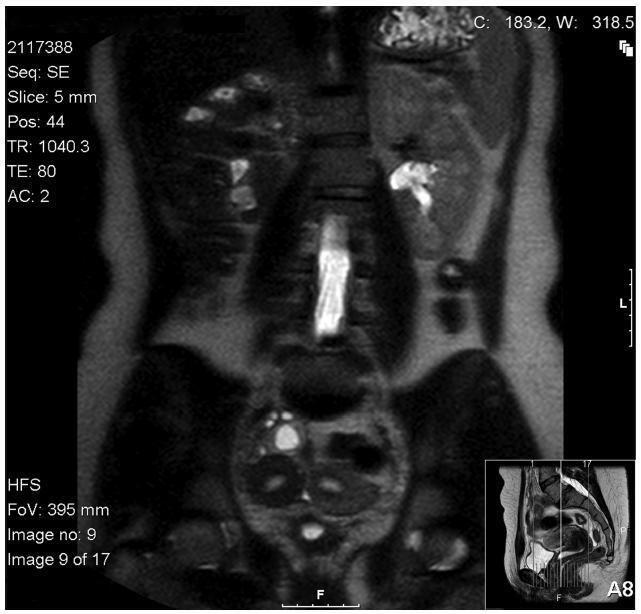
Summary
Revista Brasileira de Ginecologia e Obstetrícia. 2016;38(11):576-579
Mirror syndrome is a rare disease with unknown pathophysiology that can be present in different diseases that can cause fetal hydrops. The prognosis is usually bad with a high perinatal mortality. We report an unusual form of mirror syndrome that manifested itself only after a successful treatment for fetal hydrops (caused by twin-twin transfusion syndrome, in Quinteros stage IV) was performed. This syndrome was controlled by medical treatment, and despite the usually bad prognosis seen in these cases, we could extend the pregnancy from the 23rd to the 34th week of gestation, resulting in the birth of 2 live infants.
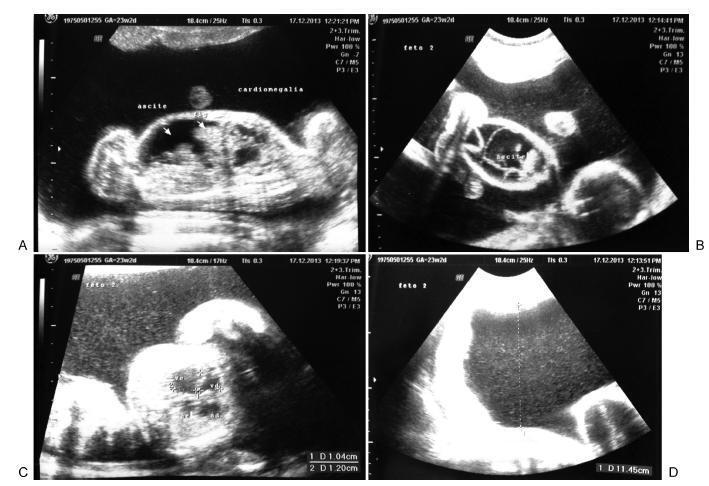
Summary
Revista Brasileira de Ginecologia e Obstetrícia. 2016;38(10):524-528
Extramammary Paget disease (EPD) is a rare malign neoplasm that may affect the vulva and has manifestations common to benign diseases such as itching, pain and eczema. This leads to delay in diagnosis and consequent worse prognosis. The definitive diagnosis is obtained by biopsy of the vulva, which shows Paget cells. The treatment of choice is wide excision with margins, which leads to sequelae, functional and aesthetic. Recurrence is common. This article reports the case of a 48-year-old female patient with history of vulvar itching for the past 2 years, who had been submitted to various treatments for benign pathologies. The patient was biopsied and was diagnosed with extensive EPD, being submitted to vulvectomy. This article aims to draw attention to the need for biopsy of pruritic vulvar lesions that do not respond to usual treatment.
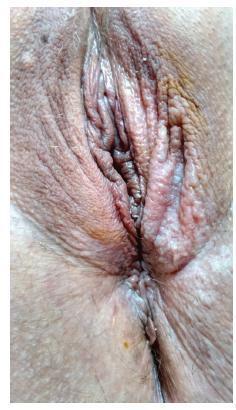
Summary
Revista Brasileira de Ginecologia e Obstetrícia. 2016;38(9):471-476
The Buschke-Loewenstein tumor is characterized by excessive growth of verrucous lesions on the genitals and/or perianal region. It is considered benign despite the high rate of recurrence and the possibility of malignant transformation. It is commonly associated with subtypes 6 and 11 of the human papillomavirus (HPV), and host 's immunity plays an important role in the development of the disease. Surgical excision is the recommended treatment in most cases. We present the case of a 16 years old female patient with extensive vulvar lesions successfully treated surgically.
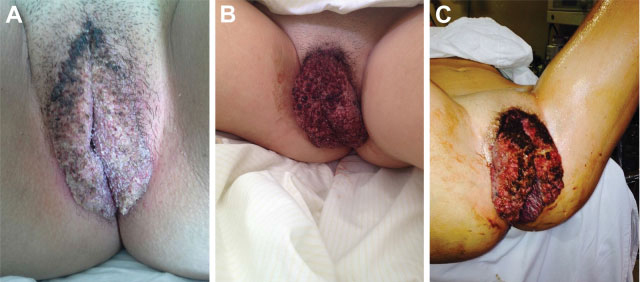
Summary
Revista Brasileira de Ginecologia e Obstetrícia. 2016;38(8):412-415
Intravenous leiomyomatosis is a benign and rare condition that can result in cardiac events with fatal outcomes when left untreated. Intravenous leiomyomatosis is probably underestimated because the diagnosis is easily missed. We present a case of an intravenous leiomyomatosis without extra-pelvic involvement, with a brief review of this pathology.
46-year-old woman submitted to hysterectomy and bilateral adnexectomy because of a pelvic mass detected in ultrasound. During the surgery, intravenous leiomyomatosis diagnosis was suspected. Pathological analysis confirmed this suspicion. Further imaging exams were performed without detecting any anomalies related to this condition. The patient remained with no evidence of disease after one year of follow-up.
Intravenous leiomyomatosis is a rare condition that can lead to serious complications. Early diagnosis followed by an appropriate treatment is very important to patient outcome, and underdiagnoses can be counteracted if the gynecologist is aware of this entity.
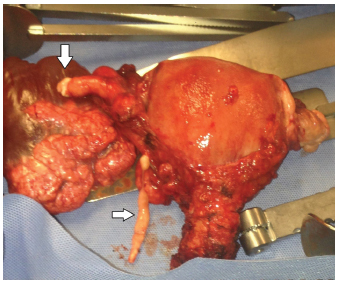
Summary
Revista Brasileira de Ginecologia e Obstetrícia. 2016;38(7):365-367
Mature cystic teratomas, or dermoid tumors, are the most common benign ovarian neoplasms in young women. Malignant transformation is rare, and occurs in less than 2% of the cases. The heterogeneous histological composition of these tumors may be responsible for the occasional elevation of various tumor markers, such as Ca19-9 and Ca125. We describe one case of mature cystic teratoma in a 50-year old woman with the second highest level of Ca19-9 (8922.76 UI/mL) described in the literature. We concluded that abnormal levels of Ca19-9 are not necessarily associated with ovarian malignancy, and may lead to unnecessary medical intervention and patient anxiety. Therefore, the clinical features, imaging studies and antigen testing should be interpreted carefully, and should not limit the surgical approach.
